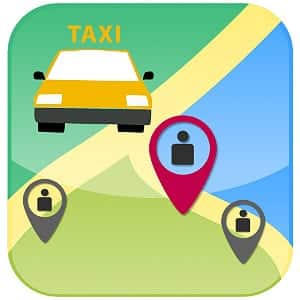In San Francisco, the average cab only transports 504 passengers a month. In 2012, that number was 182% higher, about 1,424 monthly trips. By making for-hire car service easier than it's ever been, Uber has effectively killed its hometown's taxi industry.

New York City Councilman Ben Kallos, a Democrat representing the Upper East Side, has introduced legislation that hopes to offer that response. The solution is simple: create an app for New York's licensed cabs. Offer the same information to drivers and riders and the same ease-of-use. But can Kallos' proposal really match Uber's brilliance?
To find the closest personal injury attorney near me, see our link.
Uber's genius move was to promote greater market transparency.
Rather than working blind, traveling the streets and trolling for hails, Uber's drivers know where their potential passengers are in real-time. Better yet, Uber's app allows its drivers to identify high-density markets, areas of the city with more active hails than others. And by instituting "surge pricing," jacking up the fare in those areas, Uber encourages drivers to go where passengers need them most. Drivers rush to the high-density market, hoping to capitalize on the surge, and the passengers get the rides they want.
Most industries employ some form of this concept, which is known as dynamic pricing. Buy a plane ticket to Florida during the summer and it's expensive. Seats are limited and everyone wants to go. Buy one in winter, when demand is low, and it's cheap. Lowering the price increases the likelihood that consumers will purchase your service, and you need to fill those planes to make a flight profitable.
Dynamic pricing is much easier than it used to be, with high-power computers that can process numerous external factors in a split-second. And it's how you get supply to meet demand. Uber is the perfect example, and surge pricing has been a huge factor in the app's blockbuster success. Drivers see the greater economic opportunity, and passengers can rely on the system to serve them efficiently.
If passed into law, Kallos' bill will require the Taxi & Limousine Commission to create its own app, which would consolidate the interfaces of Uber and Lyft in an all-encompassing megamap. Cab drivers would benefit from a constant supply of information, and be able to locate eligible hails in real-time. Riders would be able to hail taxis without standing on the street. Seems like a win-win.
But the measure would also prohibit yellow and Boro taxis from participating in price surges. That extra incentive would be left to Uber drivers and other private companies. As we saw, surge pricing is how Uber engineered an efficient market, a market in which no resources were wasted, in which cabbies drove where they needed to drive. Without it, New York's licensed yellow taxis will probably still be at a disadvantage.
Officials argue that surge pricing is unfair to consumers, and some of Uber's decisions certainly seem unethical. After Hurricane Sandy, Uber doubled its fares, drawing wide-spread criticism for exploiting tragedy for financial gain. The company responded by arguing that the surge worked; it drew drivers onto the streets, many of whom would have been unwilling to take hails without the promise of higher fares.
Whether ethical or not, dynamic pricing reflects what the market can bear. If a passenger is willing to pay three times more than usual because it's raining and they have an appointment, that fact would seem to justify the increased price.
Uber has said that a new app isn't necessary, because yellow cab drivers already use Uber to find fares. In fact, Uber is the only e-hail service to have formally partnered with the Taxi & Limousine Commission. Passengers can use Uber to hail yellow and green cabs, without being subject to dynamic pricing. But the company has other ways of turning would-be yellow cab passengers into Uber riders. Kallos' bill wants to prohibit Uber and Lyft from employing those strategies.
Obviously, Uber has other reasons for opposing the bill. Uber probably fears losing the business of tech-savvy riders, a market they've expertly tapped into. Will those passengers switch to New York's app, if it offers essentially the same service as Uber?
Under considerable pressure from their native taxi industries, Spain and two cities in India just banned Uber outright. According to Kallos, prohibition isn't the way to go. The Councilman was quoted in Government Executive:
"New York City must support our tech sector: instead of making new technologies illegal, or regulating them out of business, we should provide a level playing field with fair competition so that companies, drivers and riders all win."
Kallos has a long history of putting data in the hands of citizens with information technology. In Albany, he created a public database of voting records, allowing voters to check up on their elected officials' decisions. We'll have to wait and see whether his big-city ambitions have their desired effect.
Update, January 14, 2015: The Taxi & Limousine Commission's app can't come soon enough. On the eve of Christmas, 2014, Uber made an announcement. While the app will continue allow passengers to hail New York's licensed taxis, it's raising the price. Any Uber user who wants to get a yellow cab will have to pay a $2 surcharge.
This hike in fares came after Uber lowered those for its UberX service, already its low-cost option. At one point, the fare for an UberX ride was roughly equivalent to that for a traditional taxi. Now, Uber is lower.
For more related info, see our next article: New York’s Taxi Of Tomorrow: Posing New Risks For Passengers?